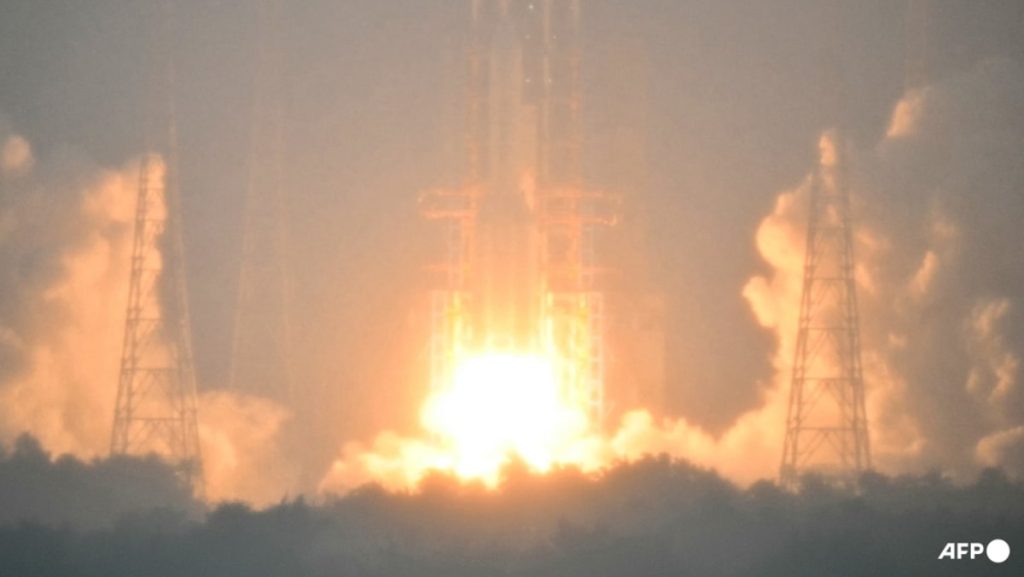China launched an uncrewed spacecraft on a mission to retrieve rocks and soil from the far side of the moon, marking a significant achievement in their lunar and space exploration program. The Chang’e-6 probe, weighing more than 8 metric tons, was launched using China’s largest rocket, the Long March-5, from the Wenchang Space Launch Center on the southern island of Hainan. The spacecraft is designed to land in the South Pole-Aitken Basin on the far side of the moon and retrieve samples to bring back to Earth.
This launch comes after previous successful missions by China, including the Chang’e-4 mission in 2018, which was the country’s first unmanned moon landing on the far side. In 2020, the Chang’e-5 mission marked the first time humans retrieved lunar samples in 44 years. With the Chang’e-6 mission, China aims to become the first country to retrieve samples from the moon’s “hidden” side, facing away from Earth. The success of China’s lunar program has been impressive, leading to praise and curiosity from international researchers and space agencies.
Foreign payloads from countries such as France, Italy, Pakistan, and the European Space Agency were attached to Chang’e-6, demonstrating collaboration and interest in lunar exploration. However, no US organizations were part of this mission due to legal restrictions on collaboration with China. The far side of the moon holds a mystical allure due to its limited visibility to humans, with only robotic probes providing insight into this region. The Chang’e-6 mission is expected to provide valuable geological information about the South Pole-Aitken Basin, estimated to be approximately four billion years old.
The probe is set to spend two days on the moon, collecting 2kg of samples before returning to Earth. The samples retrieved by Chang’e-5 in a previous mission allowed Chinese scientists to gain new insights into the moon’s geological history, including dating volcanic activity and discovering a new mineral. The scientific value of the Chang’e-6 mission lies in the age of the samples from the South Pole-Aitken Basin, offering the opportunity to study material that is much older than samples previously brought back by other countries. The mission is expected to provide valuable information for researchers studying the moon’s evolution and geological processes.
Following the launch, the probe will take several days to reach the moon’s orbit before landing in the South Pole-Aitken Basin in early June. The mission presents a unique opportunity to study an area of the moon that is relatively unexplored, providing new insights and potential discoveries about its composition and history. The success of this mission will further solidify China’s position as a leader in lunar exploration and contribute to the global scientific understanding of Earth’s natural satellite.















